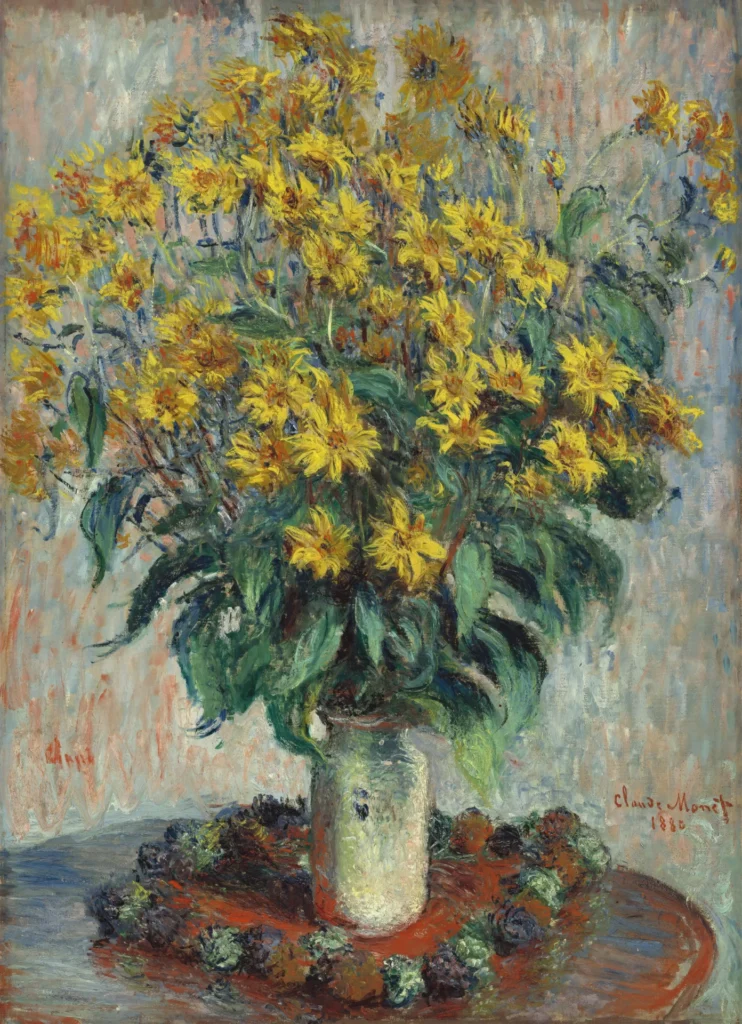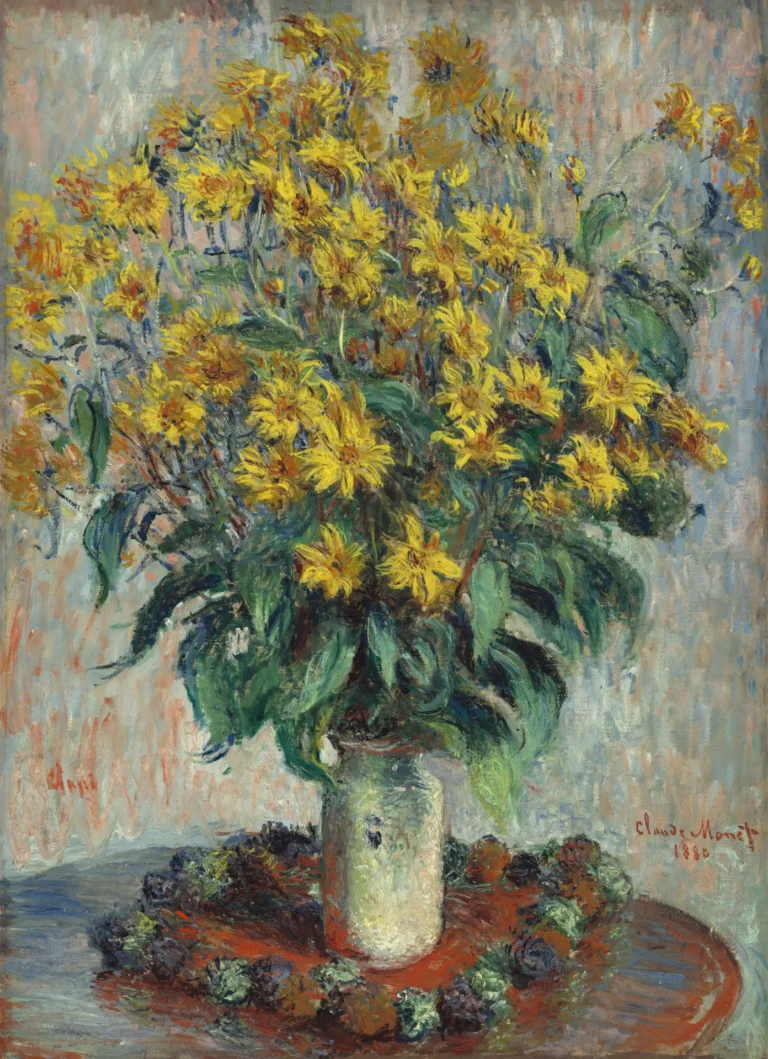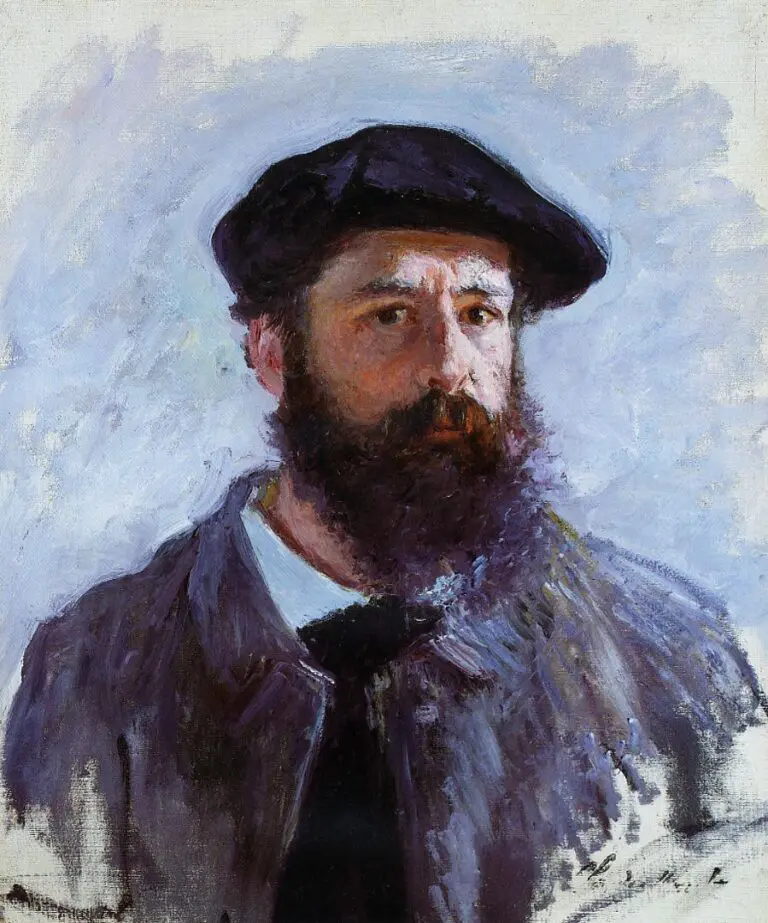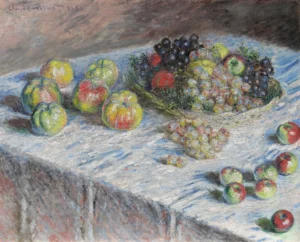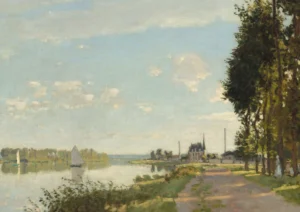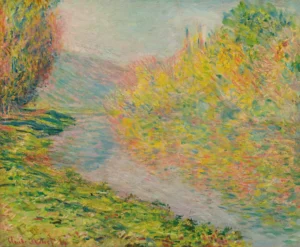Jerusalem Artichoke Flowers (1880)
Created in 1880, Jerusalem Artichoke Flowers is a captivating still life by Claude Monet, renowned for its vibrant bouquet of Jerusalem artichokes, an emblem of his Impressionist style. The flowers burst with color, set against a soft-toned background marked by Monet's characteristic loose brushstrokes. The painting's magnificence lies not only in its aesthetics but also in its well-documented journey through various prestigious collections, underscoring its status in the art world.
Year 1880
About the Artwork
The story of Jerusalem Artichoke Flowers begins in the late 19th century, at a time when Impressionism was a burgeoning movement. Monet, captivated by natural beauty, often explored floral compositions, and this painting encapsulates his fascination with color and light. The painting reflects his innovative approach; he experimented with variations in brushstroke and color to evoke atmosphere and depth. Initially mistaken for other floral subjects, it was embraced in the prestigious salons of the time. Its journey through collectors ultimately led to its current home at the National Gallery of Art, allowing it to inspire and enchant audiences.
Did You Know
Jerusalem artichokes are not true artichokes; they are actually tuberous sunflowers, native to North America. Monet’s choice to focus on their vibrant colors showcases his appreciation for unique and local flora.
Monet was a pioneer of the Impressionist technique, often working en plein air (outdoors) to capture the changing effects of light. Jerusalem Artichoke Flowers demonstrates his ability to make vivid floral compositions while experimenting with color theory.
Jerusalem Artichoke Flowers was prominently displayed in the Seventh Impressionist Exhibition in Paris, indicating its immediate recognition by contemporaries and solidifying Monet’s place among elite Impressionist artists.




